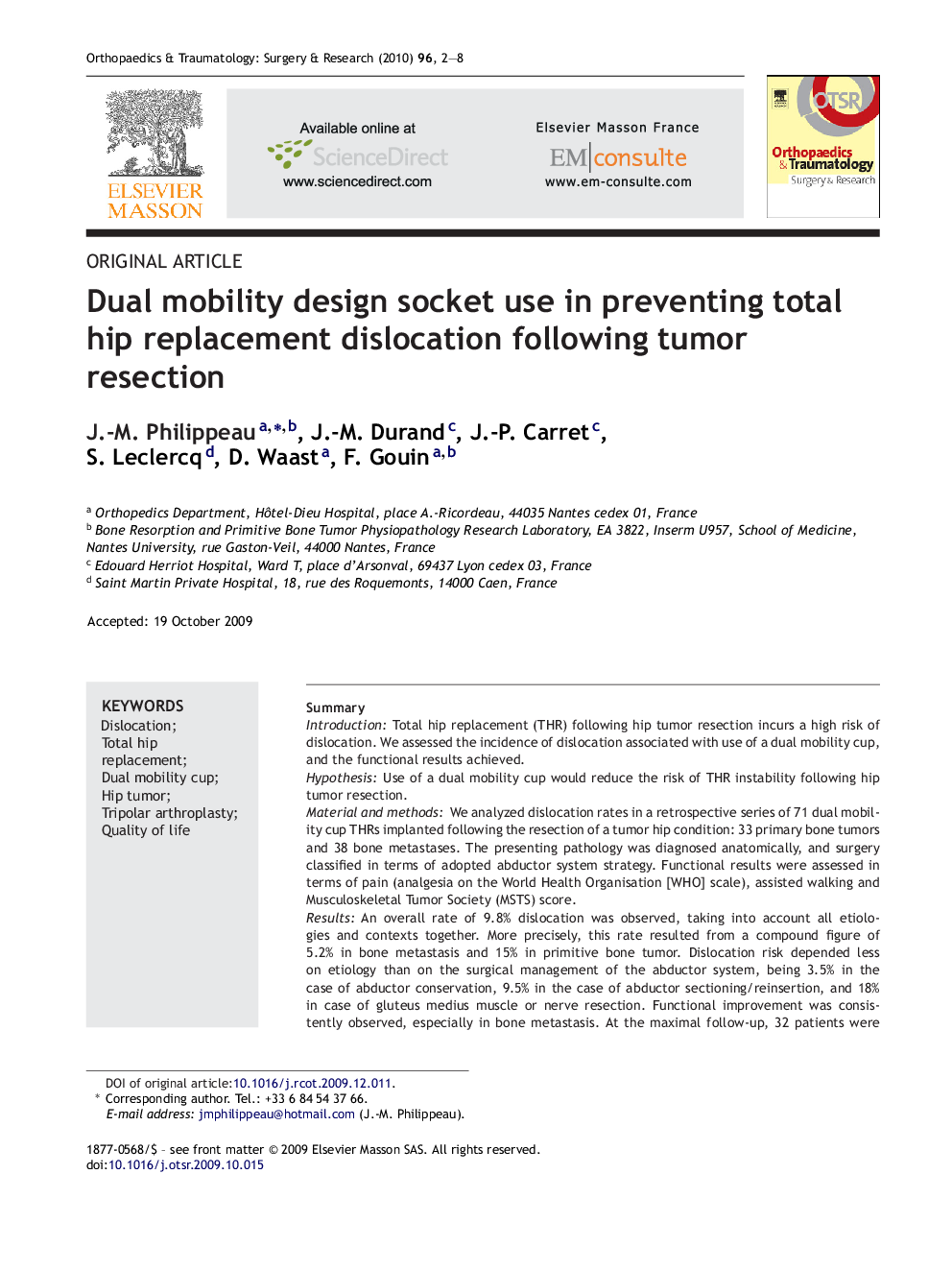| کد مقاله | کد نشریه | سال انتشار | مقاله انگلیسی | نسخه تمام متن |
|---|---|---|---|---|
| 4082405 | 1267637 | 2010 | 7 صفحه PDF | دانلود رایگان |

SummaryIntroductionTotal hip replacement (THR) following hip tumor resection incurs a high risk of dislocation. We assessed the incidence of dislocation associated with use of a dual mobility cup, and the functional results achieved.HypothesisUse of a dual mobility cup would reduce the risk of THR instability following hip tumor resection.Material and methodsWe analyzed dislocation rates in a retrospective series of 71 dual mobility cup THRs implanted following the resection of a tumor hip condition: 33 primary bone tumors and 38 bone metastases. The presenting pathology was diagnosed anatomically, and surgery classified in terms of adopted abductor system strategy. Functional results were assessed in terms of pain (analgesia on the World Health Organisation [WHO] scale), assisted walking and Musculoskeletal Tumor Society (MSTS) score.ResultsAn overall rate of 9.8% dislocation was observed, taking into account all etiologies and contexts together. More precisely, this rate resulted from a compound figure of 5.2% in bone metastasis and 15% in primitive bone tumor. Dislocation risk depended less on etiology than on the surgical management of the abductor system, being 3.5% in the case of abductor conservation, 9.5% in the case of abductor sectioning/reinsertion, and 18% in case of gluteus medius muscle or nerve resection. Functional improvement was consistently observed, especially in bone metastasis. At the maximal follow-up, 32 patients were not using analgesics, six were taking WHO class III analgesics, 10 class II and 23 class I. Mean MSTS score was 68.1% ± 23.5% in bone metastasis and 59.6% ± 17.5% in primary bone tumor. Fourteen patients could walk without assistance, 33 with a single cane, 15 with two canes and eight with a walker; one patient had not been able to resume walking.DiscussionIn these indications, dual mobility cups use lead to lower dislocation rates than those reported in the literature. It proved especially effective in the case of bone metastasis and consolidation surgery. In the case of primary bone tumor, it failed to prevent dislocation following acetabular resection, especially when involving the abductor muscles and/or abductor innervation, although it provided lower dislocation rates, comparable to those experienced with other techniques, when applied to limited resection.Level of evidenceIV. Retrospective therapeutic study.
Journal: Orthopaedics & Traumatology: Surgery & Research - Volume 96, Issue 1, February 2010, Pages 2–8